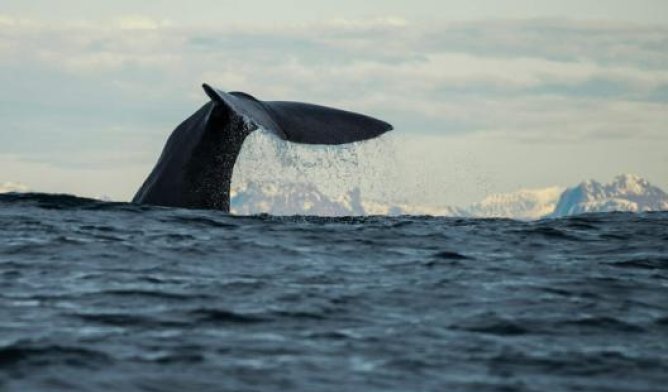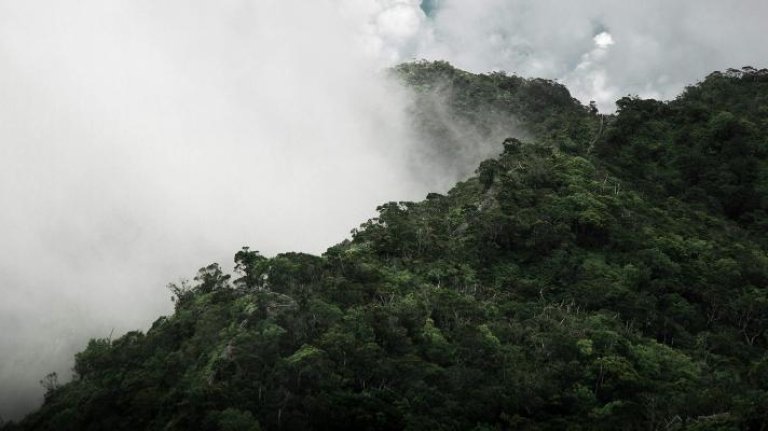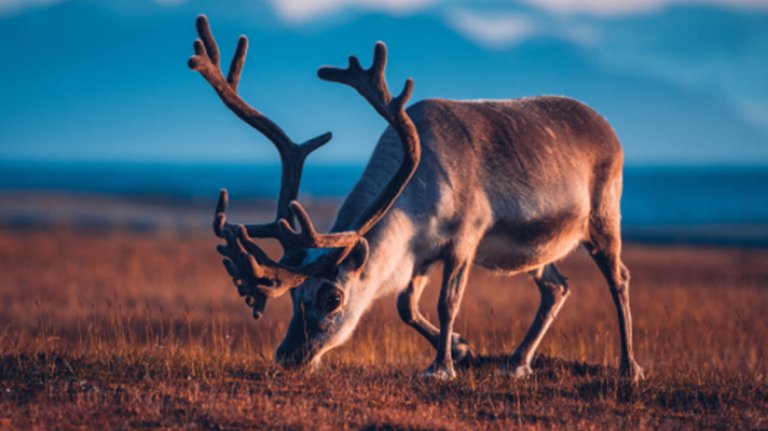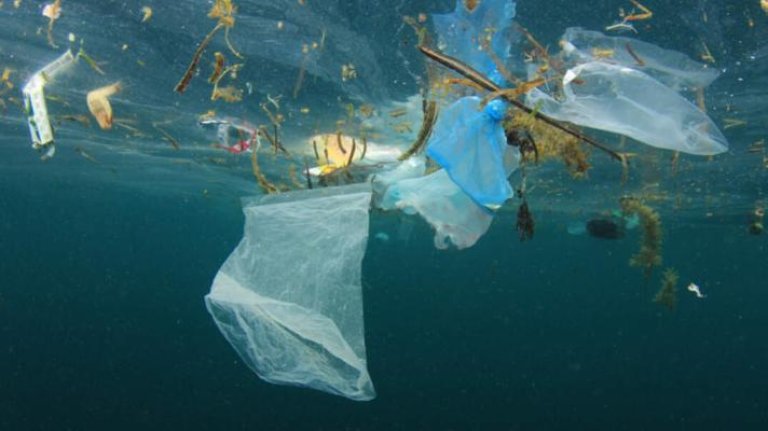
Policies and governance
Discover our policy on nature
This policy is a supporting document to the Storebrand Group Sustainable Investment Policy, detailing how Storebrand can contribute to reversing nature loss.
Our commitment to nature
The policy also takes consideration of the EU taxonomy and Sustainable Finance Disclosure Regulations (SFDR) which will also be central in guiding what constitutes a positive impact on nature and will require increased transparency and reporting on biodiversity risks and impacts in our investment portfolios.
As an asset manager, we are committed to maintaining and strengthening biodiversity. We believe biodiversity and nature loss will affect the capacity of our long-term economic growth and is likely to have implications for long-term asset returns. Protecting nature is therefore an integral part of Storebrand’s commitment to sustainability.
Storebrand's targets related to biodiversity
Goal 1
Net-zero greenhouse gas emissions by 2050
Goal 2
Finance 15% of our AUM by 2025 in companies that contribute to the SDGs
Goal 3
Eliminate commodity driven deforestation by 2025
For all these goals, we have developed a detailed strategy for ESG integration and active ownership. To complement our commitment on deforestation, we have established Investors Policy Dialogue on Deforestation (IPDD), a collaborative investor initiative to engage with policymakers in selected countries to halt deforestation. As a signatory to the Finance for Biodiversity Pledge (1), we are also committed to collaborate and share knowledge, engage with companies, assess impact, set targets and report publicly on biodiversity before 2025. This policy is detailing key areas where we believe we can contribute. These are mainly through:
- Impact assessment and target setting
- Engagement with relevant stakeholders
- Risk management: Increasing our positive and reducing our negative impact on nature and
- Reporting: nature related Financial Disclosure
Definition of biodiversity and nature
“The variability among living organisms from all sources including terrestrial, marine, and other aquatic ecosystems and the ecological complexes of which they are a part. This includes variation in genetic, phenotypic, phylogenetic, and functional attributes, as well as changes in abundance and distribution over time and space within and among species, biological communities, and ecosystems.”
Intergovernmental Science-Policy Platform on Biodiversity and Ecosystem Services
Biodiversity is the part of nature that is alive and includes every living thing on Earth. Nature is all the existing systems created at the same time as the Earth, all the features, forces and processes, such as the weather, the sea, and mountains. In other words, nature is all life on Earth (i.e. biodiversity), together with the geology, water, climate and all other inanimate components that comprise our planet (2).
Drivers of nature loss
In 2019 the IPBES published a major report (3) containing the first major assessment of the status of global diversity since 2005. The IPBES – Intergovernmental Science-Policy Platform on Biodiversity and Ecosystem Services – is the independent biodiversity body of the United Nations. According to the IPBES, nothing less than a systemic change will halt the biodiversity crisis. Our political, economic, and technological systems must be radically overhauled. Without these changes the ability of our planet to support life will be seriously compromised. And future generations will be deprived of the rich biodiversity we still enjoy today. Action now is vital to avert this threat.

-
main drivers of biodiversity loss:
- Land use change and nature deterioration
- Overexploitation
- Climate change
- Invasive species
- Pollution
The financial sector and changing perceptions on nature-related financial risks
According to World Economic Forum, $44 trillion of economic value generation – more than half of the world’s total GDP – is moderately or highly dependent on nature and its services and is therefore exposed to risks arising from nature loss. The IPBES Global Assessment Report estimated that 1 million animal and plant species are threatened with extinction. Five of the nine “planetary boundaries”, that have ensured the stable conditions that have enabled all civilizations to form and prosper over the last 11,000 years, are already exceeded. This affects nature’s capacity to continue providing the ecosystem services on which the society and economy depends.
Environmental change can therefore trigger significant disruptions to economic production. Business risk may be related to the impacts of a company’s operations on nature, or to the dependence of a business on ecosystem services as inputs to production. The Dasgupta Review has set out that such risks associated with biodiversity loss have significant macroeconomic and financial implications. Besides posing a systemic risk, the Review classified the financial risks associated with biodiversity loss into physical risks, such as changes in ecosystem services due to degradation of natural assets; litigation risks, such as legislation and fines from damage to natural assets; and transition risks, such as policy changes and shifts in social norms as the economy adjusts to more sustainable approaches.

The 9 planetary boundaries
In 2009 the planetary boundaries framework4) was developed by the Stockholm Resilience Centre, aimed to define the environmental limits within which humanity can safely operate. The nine planetary boundaries cover physical, chemical and biological processes of the Earth system, i.e. climate change, biosphere integrity, biogeochemical flows, land-system change, ocean acidification, freshwater use, stratospheric ozone depletion, novel entities and atmospheric aerosol loading.
To stay within the planetary boundaries, a transformation will be required with significant effort from all stakeholders, including financial institutions. Current misalignment of financial flows reflects broader weaknesses in the global economy as well as lack of regulations and public policy. While governments bear primary responsibility for addressing nature loss, we believe that the financial sector has an important complementary role. We will therefore apply the below to guide our investment decisions and actions on nature.
Strategies and investment methods
1. Impact assessment and target setting
With our investment activities, we want to contribute to the protection of biodiversity through increasing our positive and reducing our negative impacts on nature by strengthening and enhancing nature-related risk assessments in financial decision making.
We are currently assessing our impact using best available tools and will set further targets in line with international agreements such as the Global Biodiversity Framework under the Convention on Biological Diversity with the aim to support a shift in global financial flows away from nature-negative outcomes and toward nature-positive outcomes. We are committed to disclose our biodiversity footprint and align this reporting with the TNFD recommendations, once this is available.

2. Engaging with companies and other relevant stakeholders
Storebrand will give a priority to the most material sub-industries from the perspective of nature-related impacts to ensure that these companies are mitigating their potential negative impacts. Our expectations to companies are built on the mitigation hierarchy set out in the International Financial Corporation’s (IFC) Performance Standard 6 and guided by Science-Based Targets Network (SBTN) and Taskforce on Nature-related Financial Risks (TNFD).
We expect companies to adopt and implement policies to address nature-related financial risks and opportunities in their investments and financial operations. The key elements will vary by industry, but as a minimum requirement, we expect companies to report on a four-pillar approach, structured around how organizations operate:
- Governance
- Strategy
- Risk Management and
- Metrics and Targets.
In addition, companies should also incorporate the principle of “double materiality”. This means companies should disclose not just how nature may impact the organization, but also how the organization impacts nature. While Indigenous Peoples own, occupy, or use a quarter of the world’s surface area, they safeguard 80 percent of the world’s remaining biodiversity (5). Securing Indigenous Peoples’ customary rights is widely recognized as the most effective way of protecting biodiversity and ensuring sustainable use of nature. Storebrand Asset Management expects companies to respect Indigenous Peoples’ human rights, including rights to lands, territories, and resources, and to apply international best practice in seeking their Free, Prior and Informed Consent for business activities that may affect them. In addition to dialogue with companies, we will actively use our shareholder voting rights to promote protection of nature. Through voting at company shareholder meetings, we will signal whether we consider companies to be making acceptable progress and we commit to the following:
- Supporting shareholder resolutions asking management of companies in high-impact sectors to assess, report on and reduce key impacts and dependencies on nature.
- Support shareholder resolutions asking companies to set science-based targets for nature and climate, including emissions from forestry, agriculture, and land use.
- Voting in favor of proposals asking for location-specific disclosure of dependencies and impacts on nature.
- Voting in favor of proposals asking companies to abstain from operating in protected areas.
Whilst engaging with companies is important, halting biodiversity loss also requires government action. In July 2020, Storebrand established and is co-leading the Investors Policy Dialogue on Deforestation (IPDD), a collaborative initiative of financial institutions to engage with public agencies and industry associations in selected countries on deforestation. Building on the lessons learned from this initiative, we will continue to engage with policy makers and regulating authorities with the aim to protect nature and reduce nature-related risks.

3. Risk management: increasing our positive and reducing our negative impacts on nature
As a first initial step, we did high-level screening of direct nature-related impacts and dependencies for our portfolio of equity and bonds using the measurement tool ENCORE 6). The results provide a preliminary picture of potential risks and dependencies associated with Storebrand’s portfolio. Further analysis will be conducted in the future to understand these risks and dependencies in greater detail.
Storebrand’s highest exposure to impact-related risks stems from the solid waste impact driver, followed by water pollutants, soil pollutants, water use, non-GHG air pollutants and GHG emissions. As such, Storebrand will prioritize actions in addressing the above impacts. Using ENCORE’s impacts knowledge base, it is also possible to identify the industries in our portfolio with the most material nature-related impacts drivers. These are utilities, consumer staples, materials, and industrials. The list will serve as a starting point for Storebrand next steps in terms of setting additional due diligence and assessing the risk of individual sub-industries in detail. Furthermore, 11% of Storebrand’s portfolio of equity and bonds is associated with either a High or Very High dependency materiality rating in ENCORE.
Storebrand’s highest exposure to dependency-related risks stems from the mass stabilization and erosion control ecosystem service. This is followed by surface water, bioremediation, ground water and flood and storm protection. The sub-industries with the most material nature-related dependencies are consumer staples, materials, and utilities. We will, as a starting point, explore ways to mitigate dependency risk to support the provision of these ecosystem services.
Storebrand will always seek to align its investments with scientific consensus on nature. We support the commitments outlined in the Convention on Biological Diversity. Statements and reports from the Intergovernmental Panel on Biodiversity and Ecosystem Services (IPBES) will provide the scientific basis for our subsequent investment decision making. If there is scientific uncertainty with regards to the negative effects of specific activities on nature, Storebrand will adopt the precautionary principle. Although we will assess each individual situation separately, there are certain practices we will avoid as we regard them harmful to biodiversity.

We exclude companies that are practicing the following activities
-
With the aim to protecting coastal and marine environments from mining waste and to reduce marine pollution, from land-based activities, Storebrand will not invest in mining operations that conduct marine or riverine tailings disposal.
-
Companies that derive more than 5% of their revenues from Arctic drilling will be put on our observation list and closely monitored and engaged with based on our existing ownership. Some of the most iconic species in the world are endemic to the Arctic, and their habitats are under pressure by rapid climate change. The remote location and extreme weather conditions, combined with the lack of adequate infrastructure for responding to oil spills or other accidents, create an unacceptable risk of irreversible impacts of oil and gas operations in the Arctic.
We will maintain a close dialogue with companies that derive more than 5% of their revenues from the Arctic informing them of our expectations of measures and results. We expect the companies to show improvement within a pre-determined time. Depending on the outcome, the companies will either be excluded from our investment universe, or removed from the observation list. We will expand to other ecologically sensitive areas as data improves.
-
The deep sea contains many of the world’s most pristine, biodiverse, and poorly studied ecosystems, which provide a broad range of critical ecosystem services. Following the precautionary principle, Storebrand will not invest in companies involved in deep-sea mining until we have more scientific knowledge on the impacts of these activities. Significant challenges must be overcome before the sector can be recognized as environmentally and economically sustainable.
-
We will not invest in companies that lobby against international agreements which promote sustainable use of biodiversity, such as the Convention on Biological Diversity.
-
Through our Deforestation policy from 2019, we have made the commitment to not invest in companies with unsustainable production of soft commodities like palm oil, soy, cattle products, and timber. This commitment will be expanded to include deforestation or conversion for production of cocoa, rubber, coffee and mining.
4. Reporting: Nature related Financial Disclosure
We are committed to disclose our biodiversity footprint and report annually against targets including any positive or negative contribution to global biodiversity goals linked to our investment, once this is available, by 2025 the latest. We will align this reporting with the TNFD recommendations which has been established to develop and deliver an integrated risk management and disclosure framework for organizations to report and act on evolving nature-related risks, with the aim to support a shift in global financial flows away from nature-negative outcomes and toward nature-positive outcomes.
The policy applies to all the respective entities within the Storebrand Asset Management Group, namely, Storebrand Fonder, SKAGEN, Storebrand Real Estate and Cubera. As such, each respective entity will establish a strategy for implementation of the policy on an entity level and report progress to the respective Boards on an annual basis.
Sources:
(1) Finance for Biodiversity Pledge
(2) Difference between biodiversity and nature, Convention Biological Diversity
(3) IPBES (2019): Summary for policymakers of the global assessment report on biodiversity and ecosystem services of the Intergovernmental Science-Policy Platform on Biodiversity and Ecosystem Services. IPBES Secretariat, Bonn, Germany.
(4) Nine Planetary Boundaries, Stockholm Resilience Centre 2009
(5) The World Bank
(6) Encore tool, Natural Capital Finance Alliance in partnership with UNEP-WCMC